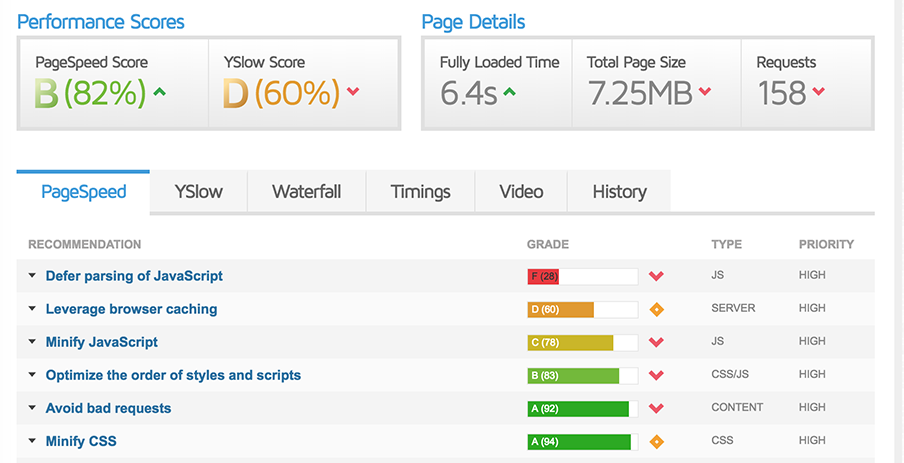
15 Oct Improve Website Speed in 5 Steps
Speed Matters
In today’s fast-paced digital world, customers will wait no more than 3 seconds for a web page to load before abandoning a site. Just a half a second difference in load time can make a 10% difference in sales for an online retailer. (via SiteUpTime)
1. Scan your page using GTMETRIX


2. Minify your CSS and JS files
Minification is a process of minimizing or reducing the size of a file. One good example of minifying your css and js files is by removing your /*comments*/ on your codes. Alternatively, you can use plugins to automatically minify your files.
3. Optimize Images
The same with minification, optimizing also reduces the file size of your images. However, most of the time, having an automatic automator can lessen the quality of your images. It is important to maintain the quality of your images while optimizing them without sacrificing the quality. So you can use Photoshop or Lightroom to lessen the size of your images before using them on your site. Another way to optimize is during the scanning of your site using GTMetrix, that you use the download links of your images optimized by GTMetrix itself.
4. Caching
Caching is the process of storing temporary data on a browser for future use. It is a very useful practice to save a copy or cache your website especially when your audience is constantly browsing on your page. Caching allows your website to be “pre-loaded” into your visitor’s browser, enabling it to process faster every time a user visits. A useful plugin to save cache of your website is W3 Total Cache.
5. Content Delivery Network (CDN)
A Content Delivery Network or CDN is a system of distributed servers that delivers pages and contents to users all around the globe. CDN sends site requests from the nearest server available to the visitor thus, making the site delivered and displayed on the browser faster.





No Comments